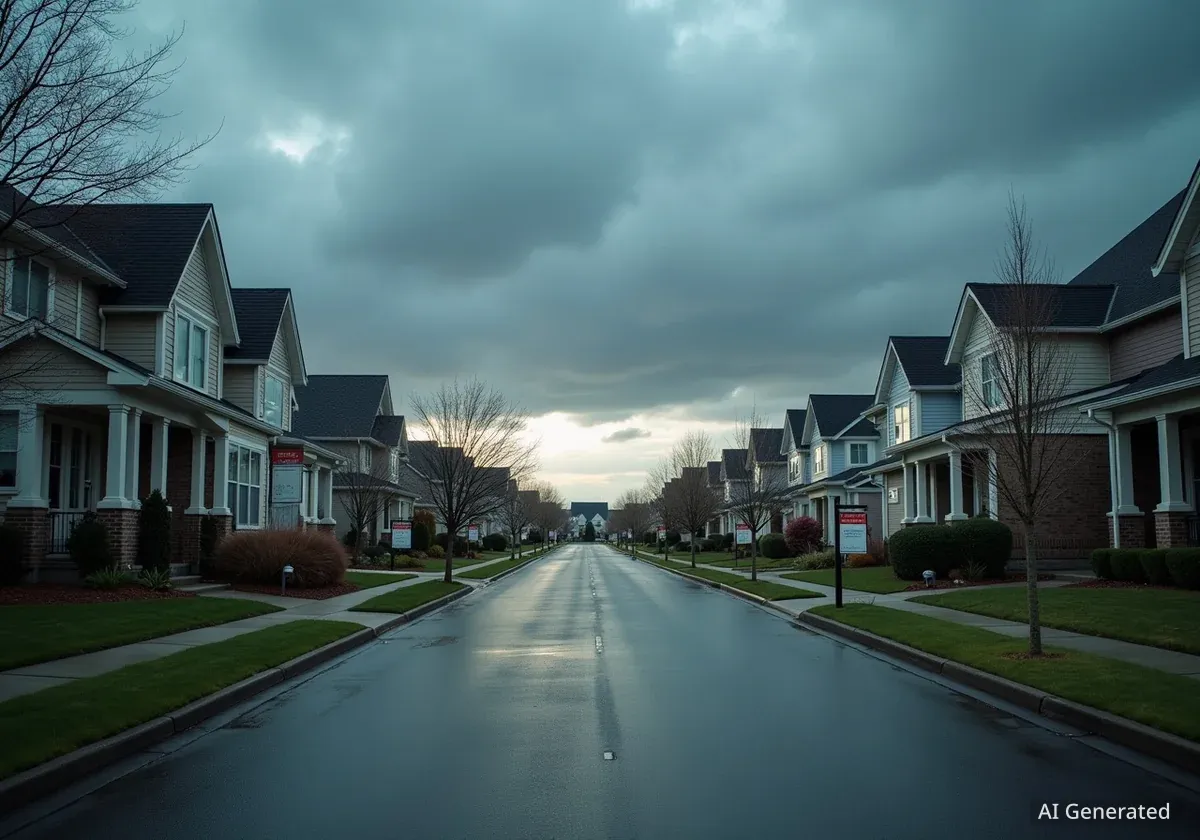A growing number of American homeowners are facing a severe insurance crisis, as rising climate-related risks from wildfires, floods, and hurricanes make properties increasingly difficult and expensive to insure. This trend is not only placing immense financial strain on families but also creating systemic risks for the U.S. housing market and the broader financial system.
Key Takeaways
- Extreme weather events linked to climate change are causing home insurance premiums to surge, with increases of up to 50% in high-risk areas.
- Insurance companies are increasingly non-renewing policies or withdrawing from entire states, leaving millions of homeowners with limited or no coverage options.
- The lack of affordable insurance threatens the stability of the U.S. housing market, which accounts for nearly one-third of household wealth and 18% of GDP.
- Federally-backed mortgage systems are underpricing climate risk, potentially shifting billions of dollars in losses from natural disasters onto taxpayers.
The Uninsurable Home: A Spreading Reality
For many Americans, the threat of climate change is no longer a distant problem. It is arriving in the form of non-renewal notices from their home insurance providers. In states like New Mexico, which ranks sixth in the nation for wildfire risk, the consequences are becoming stark.
Home insurance rates in the state increased by 24% between 2021 and 2023. During that same period, insurance companies chose not to renew more than 10,000 policies, contributing to a troubling statistic.
New Mexico's Insurance Gap
According to recent data, 13% of properties in New Mexico are uninsured, the second-highest rate in the United States. This leaves over 115,800 homes with high wildfire risk financially exposed to potential disaster.
This issue extends far beyond one state. Insurers, facing mounting losses from natural disasters, are re-evaluating their risk exposure across the country. They have begun reducing coverage or pulling out of markets once considered low-risk, including areas in Utah, Arizona, and Iowa.
Economic Ripples Through the Housing Market
The stability of the U.S. economy is deeply intertwined with the health of its housing market. Housing represents approximately 30% of all household wealth and contributes to 18% of the nation's gross domestic product (GDP). When insurance becomes unavailable or unaffordable, it creates a domino effect that threatens this foundation.
The Mortgage Connection
Most mortgage agreements require homeowners to maintain adequate property insurance. Without it, homeowners are in violation of their loan terms, which can lead to severe penalties or even foreclosure. As insurers retreat from high-risk regions, millions could find themselves in this precarious position.
The combination of soaring insurance premiums and higher interest rates puts additional financial pressure on households, increasing the likelihood of mortgage defaults. This creates a cycle of risk that impacts homeowners, lenders, and the wider financial system.
A Problem Bigger Than 2008?
Some analysts warn that widespread mortgage defaults triggered by an insurance crisis could have a more severe impact on the banking system than the subprime mortgage crisis of 2008. The Congressional Budget Office has cautioned that rising premiums and non-renewals could lead to a nationwide decline in property values.
The Rising Tide of Climate-Related Disasters
The insurance industry's retreat is a direct response to the escalating frequency and intensity of extreme weather events. Since the 2010s, home insurers have consistently paid out more in claims than they have collected in premiums, making their business models unsustainable in many areas.
Recent events highlight the scale of the destruction:
- Earlier this year, wildfires in Los Angeles destroyed 18,000 homes.
- In 2024, Hurricane Helene inflicted an estimated $78 billion in damages in North Carolina alone, affecting over 100,000 homes and causing widespread devastation across five other states.
In response to these catastrophic losses, insurers are implementing drastic measures. Homeowners in vulnerable areas have seen premium increases of up to 50%, while in a growing number of cities, private home insurance is simply no longer available at any price.
Federal Blind Spots and Taxpayer Risk
A significant vulnerability in the U.S. financial system lies within its federally-backed mortgage entities. Government-sponsored enterprises like Fannie Mae and Freddie Mac, which are crucial to the housing market, are not currently required to factor climate risks like fires or floods into their loan underwriting processes.
"This means the federal mortgage system is underpricing climate risk. Banks take advantage of this by selling risky loans to Fannie Mae and Freddie Mac, shifting the burden of potential losses onto public entities, and ultimately onto the shoulders of taxpayers," warned one financial analyst.
This practice creates a moral hazard, where private banks can offload high-risk mortgages to these public entities. The financial consequences of this policy are substantial. Last year, the Congressional Budget Office (CBO) projected that properties with federally-backed mortgages could sustain $190 billion in flood damage over the next three decades.
With 40% of the U.S. population living in coastal areas vulnerable to sea-level rise, the scale of this mispriced risk is enormous. Private lenders are already adjusting, charging interest rates approximately 0.75% higher for properties exposed to this threat. However, the federal system has yet to adapt, leaving taxpayers to bear the ultimate cost of climate-related property losses.
A Call for Proactive Measures
The current trajectory of rising premiums, insurer withdrawals, and underpriced federal risk is creating a slow-motion crisis for the American real estate market. The personal accounts of homeowners losing their insurance are early indicators of a much larger, systemic problem.
Sustainable investors and risk analysts are already working to quantify these climate-related financial risks to avoid vulnerable investments. Experts argue that it is crucial for government bodies, financial regulators, and the broader investment community to acknowledge these threats and begin implementing proactive strategies for mitigation and adaptation before the housing market faces a potential calamity.





